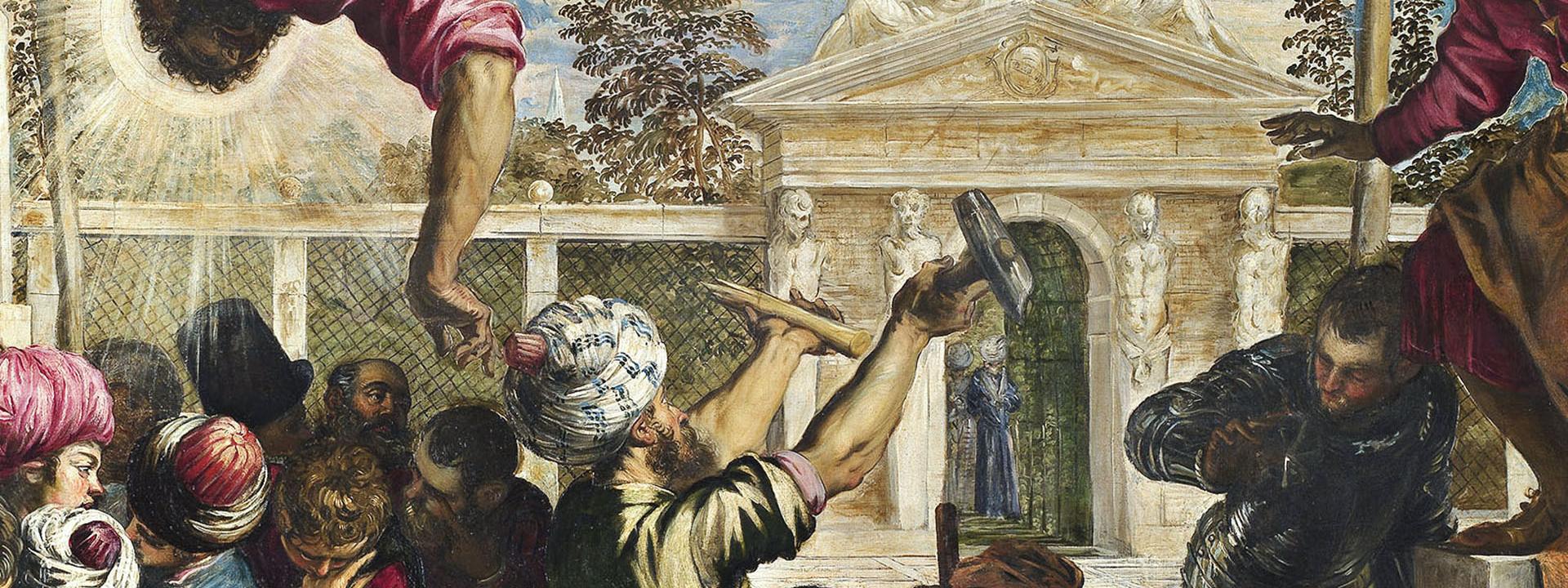This large telero was completed for the Sala Capitolare of the Scuola Grande di San Marco by April 1548, when it is was mentioned in a eulogising letter sent to the painter by Pietro Aretino, a famous literary figure of the time. Seized by French troops in 1797, the painting returned to Venice in 1815 and was sent to the Gallerie dell’Accademia following the suppression of all devotional Scuole by Napoleonic decree.
The work depicts one of Saint Mark’s posthumous miracles as chronicled by hagiographic sources – Saint Mark delivering a slave from the torments of torture. On the right we have a wealthy man from Provence seated on a raised throne who is torturing a bound servant, guilty of disobeying his master and going on a pilgrimage to Venice to pay homage to the body of the Evangelist, vowing to give his limbs to protect the saint. The miraculous apparition of Saint Mark, who had been invoked by the slave, leads to the destrution of the implements of torture, leaving the wealthy man, executioners, and crowd astounded. The Miracle was Tintoretto’s public consecration in Venice and represents the moment when the different experiences of his youth converge into his full maturation, giving life to a provocatively innovative language. The theatrical nature of the piece, with its monumental scenographic layout and the skilful direction of the crowds, betrays the painter’s familiarity with Venice’s theatres, and gives rise to a new season for the tradition of large narrative paintings commissioned by the Scuole.

